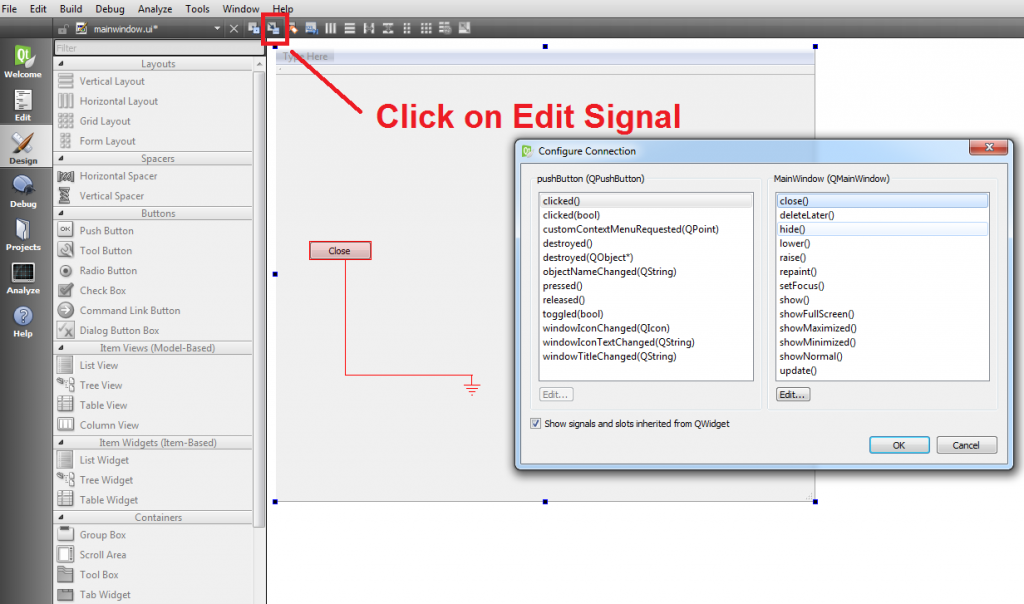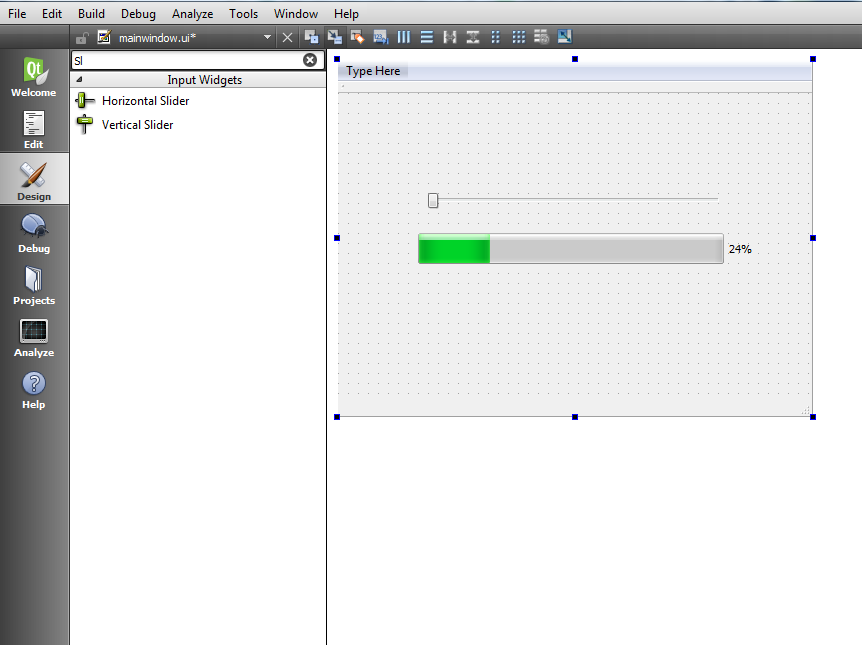Example Slot Signal
Similarly, the signal/slot system can be used for other non-GUI usages, for example asynchronous I/O (including sockets, pipes, serial devices, etc.) event notification or to associate timeout events with appropriate object instances and methods or functions.
Every class can disconnect its slot or signal at any time when it is not interested in events anymore. If a class is destroyed, it automatically disconnects all of its signals and slots. If, in the above example, class Y is destroyed, it disconnects from Slot A in Class X and from Signal 1 in Class X and Z. Basic Features Creating a Slot. In this video iam going to show you how you can create Signal And Slots in Qt5 C with Practical Examples, in this we are going to introduce Signal And Slot.
I’ve been asked multiple times how I would implement a signal / slot mechanism in modern C++. Here is the answer!
What’s the Signal / Slot Pattern?
So basically it allows for event based inter-object communication. In my opinion it’s intuitive to use and produces easily readable code when used in a moderate amount. And the big plus: It can be added to your program with one simple template class!
There are many libraries around (refer to the linked Wikipedia article) implementing this pattern, but it’s so easy to implement on you own that I would recommend to do this without an additional dependency. All you need is the header I posted below. And it’s a good exercise.
The signal template class
Below you can find the entire class. Because this class is using variadic templates you can define signals which pass any kind of data to their slots. Basically you can create signals which allow for arbitrary slot signatures. The emit method will accept the same argument types you declared as template parameters for the Signal class. The class is documented with comments and should be quite understandable. Further below you will find two usage examples.
Simple usage
The example below creates a simple signal. To this signal functions may be connected which accept a string and an integer. A lambda is connected and gets called when the emit method of the signal is called.

Example Slot Signal Definition
When you saved the Signal class as Signal.hpp and the above example as main.cpp you can compile the example with:
And if you execute the resulting application you will get the following output:
Advanced usage
This example shows the usage with classes. A message gets displayed when the button is clicked. Note that neither the button knows anything of a message nor does the message know anything about a button. That’s awesome! You can compile this example in the same way as the first.
You may also connect member functions which take arguments (Thank you FlashingChris for pointing out how to do this without std::placeholders!). In the following example Alice and Bob may say something and the other will hear it:

Issues & next steps

There are two drawbacks in this simple implementation: It’s not threadsafe and you cannot disconnect a slot from a signal from within the slot callback. Both problems are easy to solve but would make this example more complex.
Using this Signal class other patterns can be implemented easily. In a follow-up post I’ll present another simple class: the Property. This will allow for a clean implementation of the observer pattern.

Have some fun coding events in C++!

Edit on 2020-10-19:
Example Slot Signal C++
- Add move-copy-constructor and move-assignment-operator
- Add
emit_for_all_but_oneandemit_formethods. - Remove previously added
std::forward.